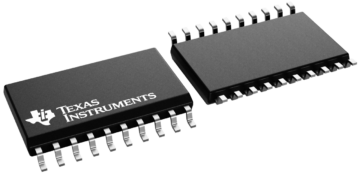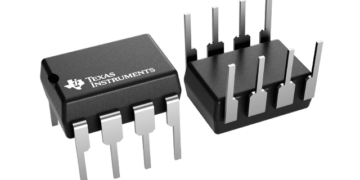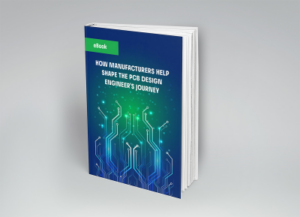
Electric vehicles (EVs) and EV charging stations are one of the key areas for silicon carbide semiconductor applications.
Too often, consideration of the best choice of PCB material is overlooked during design. Although this decision may not have catastrophic results in most cases, it can lower the performance and quality of your board. The same is true for component material. Instead of simply opting for the silicon default, you should consider where your PCB will be used and examine other options that may offer better performance and reliability. For example, electric vehicles (EVs) and charging systems benefit from silicon carbide semiconductor applications. Understanding applications like this will help you choose when silicon carbide is the best solution for your design.
Common Silicon Carbide Applications
Silicon carbide (SiC) semiconductor technology is revolutionizing high-power electronics by enabling unprecedented efficiency gains, superior thermal performance, and reliable operation in extreme conditions. As engineers design next-generation power systems for electric vehicles, renewable energy, and industrial automation, understanding the benefits of Silicon carbide semiconductor applications becomes critical for achieving optimal performance and competitive advantages.
| Silicon Carbide Semiconductor Applications and Benefits | ||||
| Semiconductor Applications | Operating Voltage | Switching Frequency | Efficiency Gain vs Silicon | Key Benefits |
| EV Traction Inverters | 400V-800V | 10-20 kHz | 2-5% improvement | Extended range, fast charging |
| EV DC-DC Converters | 12V-800V | 50-200 kHz | 3-7% improvement | Reduced weight, higher power density |
| EV Charging Stations | 400V-1000V | 20-100 kHz | 4-6% improvement | Faster charging, smaller footprint |
| Solar Inverters | 600V-1500V | 16-50 kHz | 1-3% improvement | Longer lifespan, higher reliability |
| Wind Power Converters | 690V-1000V | 2-5 kHz | 2-4% improvement | Grid stability, power quality |
| Industrial Motor Drives | 480V-690V | 4-16 kHz | 2-5% improvement | Precise control, energy savings |
| Grid-Tied Energy Storage | 400V-1000V | 10-20 kHz | 3-6% improvement | Fast response, high efficiency |
| Aerospace Power Systems | 270V-540V | 20-100 kHz | 5-8% improvement | Weight reduction, reliability |
Silicon Carbide Technology Advantages
SiC semiconductors offer fundamental material advantages that enable superior performance across all power electronics applications. The wide bandgap structure provides 10x higher breakdown field strength and 3x better thermal conductivity compared to silicon.
Core Silicon Carbide Semiconductor Application Performance Benefits:
|
SiC Application Advantages by Industry Sector
SiC technology offers benefits that can be applied virtually to the entire range of products where semiconductors are used. However, industry sectors such as electric vehicles (EVs) and charging systems, renewable energy systems, and industrial automation are leading the way in taking advantage of the improvements SiC offers.
Electric Vehicle and Charging Applications
The automotive sector represents one of the fastest-growing silicon carbide semiconductor application areas. Leading this growth is the utilization of SiC in EV and EV charging stations, which offer several distinct benefits:
EV Traction Inverter Benefits
SiC MOSFETs in traction inverters deliver 2-5% efficiency improvements over silicon IGBTs, translating to 15-25 additional miles of driving range per charge. Higher switching frequencies enable smaller magnetic components, reducing overall system weight by 20-30%.
Fast Charging Infrastructure Benefits
SiC devices enable DC fast chargers operating at 350kW and higher power levels. The superior thermal performance allows continuous high-power operation with reduced cooling requirements. Charging stations using SiC technology also achieve 96-98% efficiency compared to 92-95% for silicon-based systems.
Renewable Energy System Applications
Silicon carbide semiconductors enable higher-efficiency power conversion in solar photovoltaic and wind energy systems. The renewable energy sector is increasingly adopting SiC technology to maximize power harvest and improve grid integration capabilities. Specific benefits for solar and wind energy systems include:
Solar Inverter Applications
SiC devices in string inverters and power optimizers achieve 98.5-99.2% peak efficiency, compared to 97-98% for silicon-based designs. Higher operating temperatures reduce cooling requirements and enable installation in harsh outdoor environments without derating.
Wind Power Conversion
Wind turbine power converters using SiC technology handle variable wind conditions more effectively through faster dynamic response and superior fault tolerance. The improved thermal performance enables continuous operation during extreme weather conditions⁵.
Both EV and wind systems enjoy benefits from grid integration.
Grid Integration Benefits:
- Power quality improvement through precise harmonic control
- Grid stability support via faster reactive power response
- Reduced installation costs from smaller transformers and cooling requirements
- Extended equipment lifespan due to lower operating stress
Industrial Motor Drive Applications
Industrial motor drives represent a significant SiC application opportunity, with efficiency improvements translating to substantial energy cost savings in high-duty-cycle applications. SiC technology enables variable frequency drives with superior performance characteristics. Specific benefits include:
| Silicon Carbide Semiconductor Applications in Industrial Automation | ||
| Industrial Application | SiC Advantages | Efficiency Impact |
| HVAC Systems | Precise temperature control, quiet operation | 3-6% energy savings |
| Pumping Systems | Variable flow control, reduced maintenance | 4-8% efficiency gain |
| Conveyor Systems | Smooth acceleration, precise positioning | 2-4% power reduction |
| Machine Tools | High-speed spindle control, precision | 5-10% energy savings |
Optimizing Your Silicon Carbide Semiconductor Application Design
Successful SiC implementation requires careful attention to design considerations that differ from traditional silicon-based systems. The following optimization guidelines will help with your design.
Guidelines for SiC Semiconductor Application Optimization
|
Ultra Librarian provides comprehensive SiC component libraries with verified CAD models, enabling rapid design implementation while ensuring accuracy across major CAD platforms.
If you’re looking for CAD models for common components or information on optimizing designs for silicon carbide semiconductor applications, Ultra Librarian helps by compiling all your sourcing and CAD information in one place.
Working with Ultra Librarian sets up your team for success to ensure streamlined and error-free design, production, and sourcing. Register today for free.








